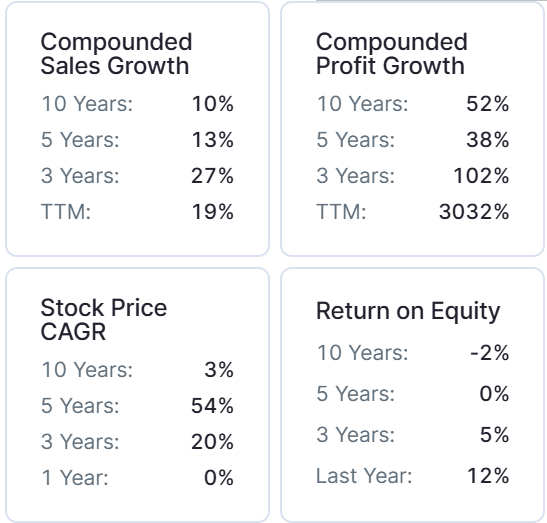JP Power (Jaiprakash Power Ventures Limited) is a well-known name in India’s energy sector. JP Power was listed on the BSE on 18th April 2005. In the last five years, its stock gave a massive return of around 800% to its investors. Will it continue to provide such impressive returns in 2025 and future years as well? In this article, we will explore the JP Power future growth potential and the JP Power Share Price Target 2025 to 2050.
About JP Power
JP Power was established in 1994 by Jai Prakash Gaur as a subsidiary company of the flagship Jaypee Group, which works in engineering, construction, cement, power, real estate, and other industries. JP Power plans, develops, implements, and manages power projects in India.

JP Power Business Model
- Power Generation: Produces electricity through thermal and hydroelectric plants.
- Energy Distribution: Supplies electricity to industrial and state utility consumers.
- Coal Mining: Engages in coal mining to meet its power generation requirements.
- Revenue Streams:
- Sale of electricity.
- Contracts with state electricity boards and private companies.
- Sale of coal from mining operations.
JP Power Fundamental Analysis
| Stock Name | Jaiprakash Power Ventures Ltd. |
|---|---|
| NSE Symbol | JPPOWER |
| Market Cap | ₹9965 Cr. |
| 52W High | ₹23.8 |
| 52W Low | ₹12.4 |
| Stock P/E | 6.43 |
| Book Value | ₹17.5 |
| Dividend Yield | 0.00% |
| ROCE | 14.0% |
| ROE | 12.8% |
| Face Value | ₹10.0 |
| Industry PE | 31.8 |
| Price to book value | 0.83 |
| Debt to equity | 0.33 |
| PEG Ratio | 0.16 |
| Quick ratio | 2.04 |

| Shareholder | March 2023 | March 2024 | March 2025 |
|---|---|---|---|
| Promoters | 24.00% | 24.00% | 24.00% |
| FIIs | 4.97% | 6.06% | 6.31% |
| DIIs | 22.19% | 18.46% | 17.52% |
| Government | 0.00% | 0.00% | 0.00% |
| Public | 48.85% | 51.47% | 52.17% |
| No. of Shareholders | 14,63,792 | 21,86,634 | 25,54,277 |
Pros of Investing in JP Power
- Strong Profit Growth: The company’s profits have grown by 39.8% every year over the past five years.
- Diversified Business: JP Power earns money from power generation, coal and sand mining, and cement grinding, which reduces dependency on one area.
- Energy Assets: It has both thermal and hydroelectric power plants, allowing it to serve different energy needs.
- Growing Energy Demand: India’s increasing need for power gives JP Power a chance to grow further.
- Government Support: Policies promoting infrastructure and energy growth work in favor of JP Power.
- Debt Reduction Efforts: The company is trying to lower its debt, which can improve its financial health.
- Renewable Energy Potential: Its hydroelectric plants can help it expand into solar or wind energy in the future.
- Increase in Institutional Confidence: DIIs have increased their holding to 17.52% in March 2025 from 17.49% in December 2024, while FIIs have increased their holding to 6.31% in March 2025 from 6.26% in December 2024, indicating a strong institutional confidence in the company’s future growth prospects.
Cons of Investing in JP Power
- High Promoter Pledging: About 79.2% of promoter shares are pledged, which increases financial risk and stock price volatility.
- Low ROE: The company earns only 4.96% on its equity, showing the company is not using its funds efficiently.
- No Dividends: JP Power doesn’t pay dividends, which may not attract investors who want regular income.
- Dependence on Coal Power: Most of its energy comes from coal, which faces stricter rules and environmental concerns.
- Regulated Electricity Prices: In India, electricity prices are subsidized and controlled by the government, which can reduce profit margins for power companies like JP Power.
- Environmental Impact: Coal mining and thermal plants contribute to pollution, which could lead to more regulations.
- Tough Competition: Other companies in the power and renewable energy sector make it harder for JP Power to grow its market share.
- Stock Volatility: The stock price is low and highly volatile, making it risky for safe investors.
- Project Delays: Delays in completing power projects have affected the company’s growth in the past.
- Global Risks: Changes in coal prices or international energy policies could impact JP Power’s business.
JP Power Ltd Balance Sheet
| Particulars | Mar 2023 | Mar 2024 | Sept 2024 |
|---|---|---|---|
| Equity Capital | 6,853 | 6,853 | 6,853 |
| Reserves | 3,592 | 4,614 | 5,145 |
| Borrowings | 4,761 | 4,246 | 4,014 |
| Other Liabilities | 2,101 | 1,590 | 1,635 |
| Total Liabilities | 17,307 | 17,303 | 17,648 |
| Fixed Assets | 13,385 | 13,007 | 12,861 |
| CWIP | 419 | 240 | 217 |
| Investments | 191 | 525 | 525 |
| Other Assets | 3,312 | 3,532 | 4,046 |
| Total Assets | 17,307 | 17,303 | 17,648 |
By the end of 2025, the JP Power share price is expected to be around ₹21 in normal conditions. In a bear market, it might be ₹20, and in a bull market, it may go up to ₹25.
| JP Power Share Price Target 2025 | Rupees (₹) |
|---|---|
| 1st Target | 20 |
| 2nd Target | 21 |
| 3rd Target | 25 |
In 2026, the JP Power share price is expected to be around ₹26 in a normal situation. In a bear market, it might be ₹24, and in a bull market, it may cross ₹32.
| JP Power Share Price Target 2026 | Rupees (₹) |
|---|---|
| 1st Target | 24 |
| 2nd Target | 26 |
| 3rd Target | 32 |
According to our analysis, the JP Power share price is expected to be around ₹30 in 2027. In a bear market, it might be ₹28, and in a bull market, it may cross ₹40.
| JP Power Share Price Target 2027 | Rupees (₹) |
|---|---|
| 1st Target | 28 |
| 2nd Target | 30 |
| 3rd Target | 40 |
According to our analysis, the JP Power share price may trade near ₹35.5 by 2028; bearish conditions could pull it down to ₹34, while a strong bull run might lift it to ₹50.
| JP Power Share Price Target 2028 | Rupees (₹) |
|---|---|
| 1st Target | 34 |
| 2nd Target | 35.5 |
| 3rd Target | 50 |
In a normal situation, the JP Power share price is projected to be approximately ₹48 in 2029. In a bear market, the value may be as low as ₹40, while in a bull market, it may rise to ₹65.
| JP Power Share Price Target 2029 | Rupees (₹) |
|---|---|
| 1st Target | 40 |
| 2nd Target | 48 |
| 3rd Target | 65 |
By 2030, the JP Power share price is projected to be around ₹55 under normal conditions. In adverse markets, the price could fall to ₹50, while favorable conditions might push it up to ₹80.
| JP Power Share Price Target 2030 | Rupees (₹) |
|---|---|
| 1st Target | 50 |
| 2nd Target | 55 |
| 3rd Target | 80 |
By 2035, the JP Power share price is projected to be around ₹150 under normal conditions. In adverse markets, the price could fall to ₹100, while favorable conditions might push it up to ₹230.
| JP Power Share Price Target 2035 | Rupees (₹) |
|---|---|
| 1st Target | 100 |
| 2nd Target | 150 |
| 3rd Target | 230 |
Under normal conditions, the JP Power share price might hit ₹350 by 2040. A bearish trend could lower it to ₹200, whereas a bullish surge could raise it to ₹600.
| JP Power Share Price Target 2040 | Rupees (₹) |
|---|---|
| 1st Target | 200 |
| 2nd Target | 350 |
| 3rd Target | 600 |
In 2050, the JP Power share price is expected to be around ₹950 in a normal situation. In a bear market, it might be ₹800, and in a bull market, it may go up to ₹1800.
| JP Power Share Price Target 2050 | Rupees (₹) |
|---|---|
| 1st Target | 800 |
| 2nd Target | 950 |
| 3rd Target | 1800 |
| Years | Target Price |
|---|---|
| JP Power Share Price Target 2025 | ₹20 to 25 |
| JP Power Share Price Target 2026 | ₹24 to 32 |
| JP Power Share Price Target 2027 | ₹28 to 40 |
| JP Power Share Price Target 2028 | ₹34 to 50 |
| JP Power Share Price Target 2029 | ₹40 to 65 |
| JP Power Share Price Target 2030 | ₹50 to 80 |
| JP Power Share Price Target 2035 | ₹100 to 230 |
| JP Power Share Price Target 2040 | ₹200 to 600 |
| JP Power Share Price Target 2050 | ₹800 to ₹1800 |
Conclusion
JP Power has excellent growth potential because of India’s need for energy and the government’s supportive policies on energy. Despite challenges such as high promoter pledging and dependence on coal, its diverse business and opportunities in renewable energy make it an attractive long-term investment option in the power sector.
Disclaimer
This article is for educational purposes only. It is not a stock recommendation and should not be treated as such. Please ask your financial advisor before making any investment decision.
Also Read: Ola Electric Share Price Target 2025 to 2050

